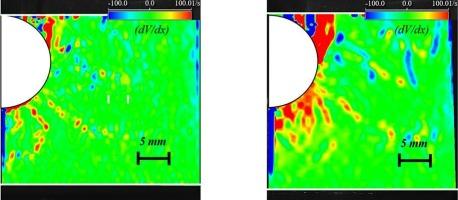Interaction between viscous fluids and media balls in wet ball milling
IF 4.6
2区 工程技术
Q2 ENGINEERING, CHEMICAL
引用次数: 0
Abstract
An experimental study was conducted on the interaction between a viscous fluid and solid spheres in a ball mill to elucidate and optimize the slurry preparation process for ceramics. In ceramic manufacturing, the grinding and mixing of raw materials are critical because they form the most upstream process and directly influence product quality. However, this process significantly relies on empirical rules and the tacit knowledge of engineers, and a detailed understanding—particularly through slurry-mixing visualization and optimization—remaining largely unexplored. Slurry-mixing conditions in a ball mill were replicated using a 90 wt% glycerin solution as a Newtonian fluid and a 0.92 wt% carboxy methyl cellulose aqueous solution as a non-Newtonian fluid, which are transparent fluids with viscosities similar to that of actual slurry, enabling visualization of the mixing process. The effects of the number of balls in the rotating cylindrical vessel and the rotational speed of the vessel on the mixing process were visualized. The results showed that oscillation and falling of media balls became more pronounced at rotation speeds between 65 and 85 rpm, enhancing the mixing efficiency. The ball-filling ratio, J, significantly influenced mixing: J = 0.2 induced frequent sliding and falling of balls, leading to effective energy transfer, whereas J = 0.3 suppressed dynamic motion. In addition, the effects of the viscous fluid and solid spheres on mixing dynamics were analyzed in detail using particle image velocimetry. The findings of this study are expected to provide practical guidance on the optimization of ball mill operations.

湿式球磨中粘性流体与介质球的相互作用
为了阐明和优化陶瓷浆料的制备工艺,在球磨机中对粘性流体与固体球的相互作用进行了实验研究。在陶瓷制造中,原料的研磨和混合是至关重要的,因为它们构成了最上游的过程,直接影响产品质量。然而,这个过程很大程度上依赖于经验规则和工程师的隐性知识,以及详细的理解,特别是通过浆料混合可视化和优化,这在很大程度上仍未被探索。采用90% wt%的甘油溶液作为牛顿流体,0.92 wt%的羧甲基纤维素水溶液作为非牛顿流体,在球磨机中复制了浆料混合条件,这是透明流体,粘度与实际浆料相似,可以可视化混合过程。研究了旋转圆柱容器内球数和容器转速对混合过程的影响。结果表明:在转速为65 ~ 85 rpm时,介质球的振荡和下落更加明显,混合效率提高;充球率J显著影响混合:J = 0.2导致球频繁滑动和下落,导致有效的能量传递,而J = 0.3抑制动态运动。此外,利用颗粒图像测速技术详细分析了粘性流体和固体球体对混合动力学的影响。研究结果有望为球磨机的优化操作提供实用指导。
本文章由计算机程序翻译,如有差异,请以英文原文为准。
求助全文
约1分钟内获得全文
求助全文
来源期刊

Powder Technology
工程技术-工程:化工
CiteScore
9.90
自引率
15.40%
发文量
1047
审稿时长
46 days
期刊介绍:
Powder Technology is an International Journal on the Science and Technology of Wet and Dry Particulate Systems. Powder Technology publishes papers on all aspects of the formation of particles and their characterisation and on the study of systems containing particulate solids. No limitation is imposed on the size of the particles, which may range from nanometre scale, as in pigments or aerosols, to that of mined or quarried materials. The following list of topics is not intended to be comprehensive, but rather to indicate typical subjects which fall within the scope of the journal's interests:
Formation and synthesis of particles by precipitation and other methods.
Modification of particles by agglomeration, coating, comminution and attrition.
Characterisation of the size, shape, surface area, pore structure and strength of particles and agglomerates (including the origins and effects of inter particle forces).
Packing, failure, flow and permeability of assemblies of particles.
Particle-particle interactions and suspension rheology.
Handling and processing operations such as slurry flow, fluidization, pneumatic conveying.
Interactions between particles and their environment, including delivery of particulate products to the body.
Applications of particle technology in production of pharmaceuticals, chemicals, foods, pigments, structural, and functional materials and in environmental and energy related matters.
For materials-oriented contributions we are looking for articles revealing the effect of particle/powder characteristics (size, morphology and composition, in that order) on material performance or functionality and, ideally, comparison to any industrial standard.
 求助内容:
求助内容: 应助结果提醒方式:
应助结果提醒方式:


